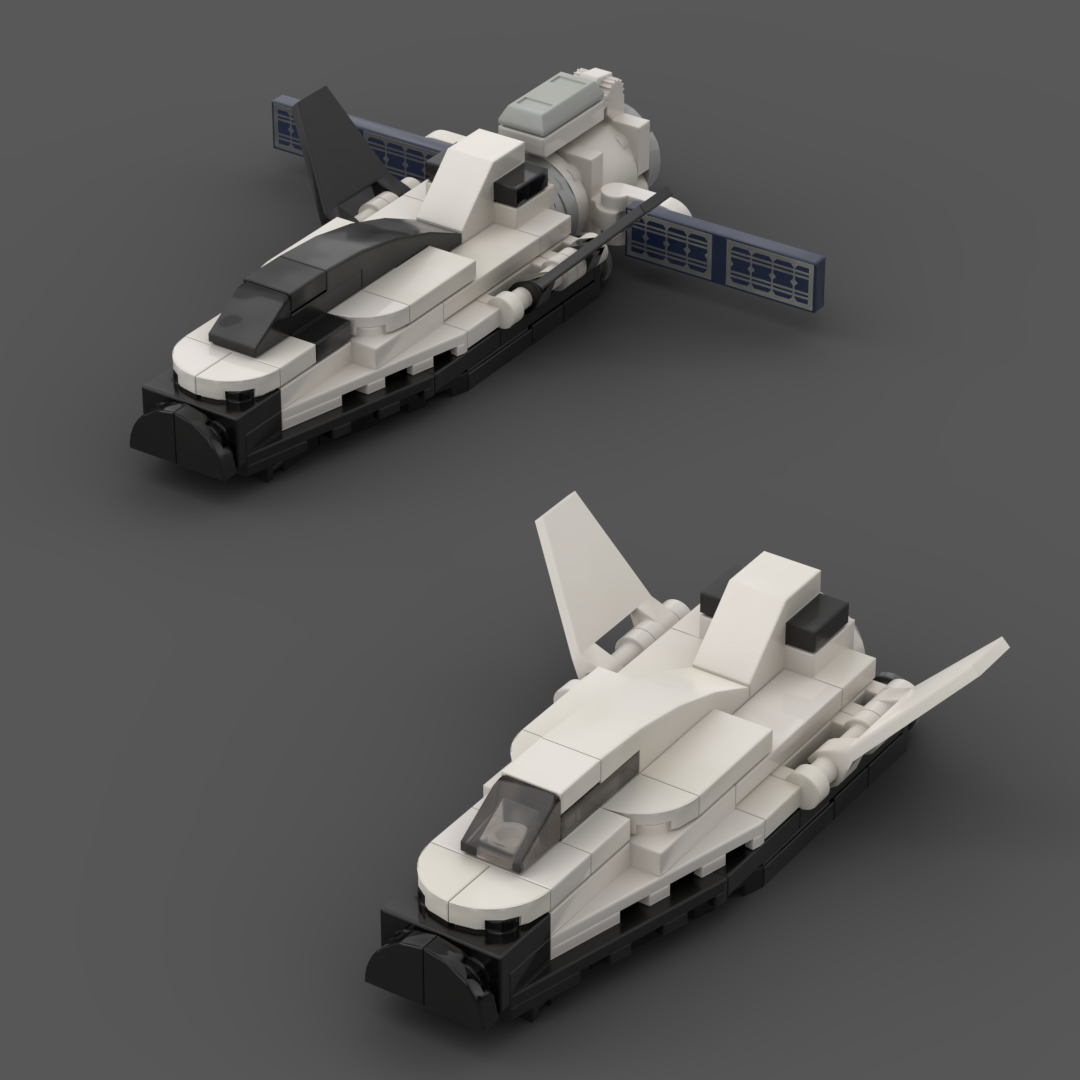
LEGO Designer:
Sebastian Schön (MoppeW40k)
Designed:
August 2019
Categories:
All, Payloads, Space Agency - ESA, Space Agency - NASA, Spaceplanes
Launch Vehicle Details
Stages:
Length:
Diameter:
Mass at Launch:
Low Earth Orbit Capacity:
Total Thrust:
Apogee:
Class:
The Dream Chaser is an American reusable lifting-body spaceplane being developed by Sierra Nevada Corporation (SNC) Space Systems. Originally intended as a crewed vehicle, the Dream Chaser Space System, to be produced after the cargo variant, Dream Chaser Cargo System, is operational. The crewed variant is capable of carrying up to seven people and cargo to and from low Earth orbit.
The cargo Dream Chaser is designed to resupply the International Space Station with both pressurized and unpressurized cargo. It is intended to launch vertically on the Vulcan Centaur rocket and autonomously land horizontally on conventional runways. A proposed version operated by ESA would launch on Ariane 5.
Crewed version
The originally planned Dream Chaser Space System is a human-rated version designed to carry from two to seven people and cargo to orbital destinations such as the International Space Station. It was to have a built-in launch escape system and could fly autonomously if needed. Although it could use any suitable launch vehicle, it was planned to be launched on a human-rated Atlas V 412 rocket.The vehicle was to be able to return from space by gliding (typically experiencing less than 1.5 g on re-entry) and landing on any airport runway that handles commercial air traffic. Its reaction control system thrusters burned ethanol-based fuel, which is not an explosively volatile material, nor toxic like hydrazine, allowing the Dream Chaser to be handled immediately after landing, unlike the Space Shuttle. Its thermal protection system (TPS) was made up of silica-based tiles and a new composite material called Toughened Unipiece Fibrous Reusable Oxidation Resistant Ceramic (TUFROC).
As of 2020, the Sierra Nevada Corporation says it still plans to produce a crewed version of the spacecraft within the next 5 years. The company says it “never stopped working” on the crewed version and fully intends to launch it after the cargo version.
CRS-2 cargo version
The cargo version of the SNC Dream Chaser is called the Dream Chaser Cargo System (DCCS) and after development completes (planned for 2022), will fly resupply flights to the ISS under NASA’s Commercial Resupply Services-2 program. Featuring an expendable cargo module mounting solar panels, the spacecraft will be capable of returning 1,750 kg (3,860 lb) to Earth while undergoing maximum re-entry forces of 1.5G.
To meet CRS-2 guidelines, the cargo Dream Chaser will have folding wings and fit within a 5 m diameter payload fairing, in contrast to the Crewed Dream Chaser, which is intended to launch without a fairing. The ability to fit into a payload fairing allows the cargo version to launch on any sufficiently capable vehicle, such as Ariane 5 as well as Atlas V. An expendable cargo module will launch attached to the aft end of the spacecraft, expanding the cargo uplift capacity and supporting the disposal of up to 3,250 kg (7,170 lb) of trash. Total uplift is planned for 5,000 kg (11,000 lb) pressurized and 500 kg (1,100 lb) unpressurized, with a downlift of 1,750 kg (3,860 lb) contained within the spaceplane. The expendable cargo module is called “Shooting Star”.
On August 14, 2019, it was announced that all six Dream Chaser CRS-2 flights will be carried into orbit by ULA’s Vulcan launch vehicle, with the first Dream Chaser flight being the second Vulcan flight in late 2021. However, on November 17 2020, SNC announced that the first flight would be pushed to 2022.
Shooting Star module
In 2019, it was announced that an expendable “Shooting Star” cargo module would be part of the Dream Chaser cargo system for CRS-2 flights. The module is a 15-foot (4.6 m) long attachment to Dream Chaser that will allow the spacecraft to carry an additional 10,000 pounds (4,500 kg) of pressurized and unpressurized cargo to ISS. The module supports disposal of unwanted cargo by burning up upon re-entry.
In addition to carrying cargo, the Shooting Star module includes solar panels that supply up to 6 kW of electrical power. It also supplies active and passive thermal management; provides Dream Chaser translation & rotation capability via six mounted thrusters; and supports berthing or docking (in different configurations) to the ISS. Access from ISS to Dream Chaser will involve crew passing through Shooting Star (which supports a shirt-sleeve environment) and through a hatch that separates Shooting Star from Dream Chaser. Sierra Nevada says the module is capable of additional types of missions in LEO or to cis-lunar destinations; they have developed a free-flying variant with additional capabilities.
In July 2020, Sierra Nevada announced a contract with the Defense Innovation Unit (DIU) to use its Shooting Star expendable cargo vehicle as a possible commercial solution for a high-powered Unmanned Orbital Outpost.~wikipedia
Designer Notes
Crewed Version
Part count: 58 bricks, 37 lots.
| Unit | width | length | height |
|---|---|---|---|
| Studs | 10.4 | 8.0 | 3.1 |
| Centimetres | 8.3 | 6.4 | 2.5 |
| Inches | 3.3 | 2.5 | 1.0 |
CRS-2 Cargo Version (with Shooting Star Module)
Part count: 72 bricks, 45 lots.
| Unit | width | length | height |
|---|---|---|---|
| Studs | 13.4 | 12.0 | 3.1 |
| Centimetres | 10.7 | 9.6 | 2.5 |
| Inches | 4.2 | 3.8 | 1.0 |
Downloads
Crewed version
Part count: 58 bricks, 37 lots.
| Unit | width | length | height |
|---|---|---|---|
| Studs | 10.4 | 8.0 | 3.1 |
| Inches | 3.3 | 2.5 | 1.0 |
| Centimetres | 8.3 | 6.4 | 2.5 |
No external URL provided.
Launch History information from space.skyrocket.de
Launch History information from space.skyrocket.de
Related Posts
None found

